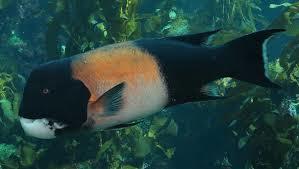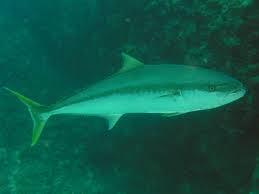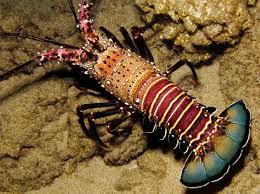CALICO BASS, KELP BASS, CABRILLA (MEXICO)
Location:
All over socal, usually in shallow water around kelp or any structure: shipwrecks, rocks, pipes and pilings. May to September kelp bass may form spawning groups in deeper water 35+ feet
Diet:
Small fish, squid, small octopus, and small crustaceans.
Sex:
Male markings: yellow-orange snouts
Female markings: golden hues and yellow chins and jaws
California Current regulations: 14-inch or longer 5 total in possession (of any kinda or bass). (always double check the regulations with fish and game before you head out)
Growth Rate: Slow! a 12” bass is about 6 years old
Spearing tips: If they’re legal size, they are older, wiser and know when they are being hunted. They get smarter with age. Any aggressive behavior will send them running. If you hold still they may come in closer. jerky movements leave u with a fish-less spear. Due to heavy spearing in the shallows, you’re more likely to find these guys holing up or in deeper water 35 plus range. Slip tips work great with these but they are usually around rocks which and really mess up an expensive tip. Use euro or wood with a cheap flopper….want a real challenge? Use a pole spear.
Cooking: a great fish all around for frying, baking, tacos or cooking whole. Ranked #6 in socal top 10 fish to catch. Great in ceviche!






